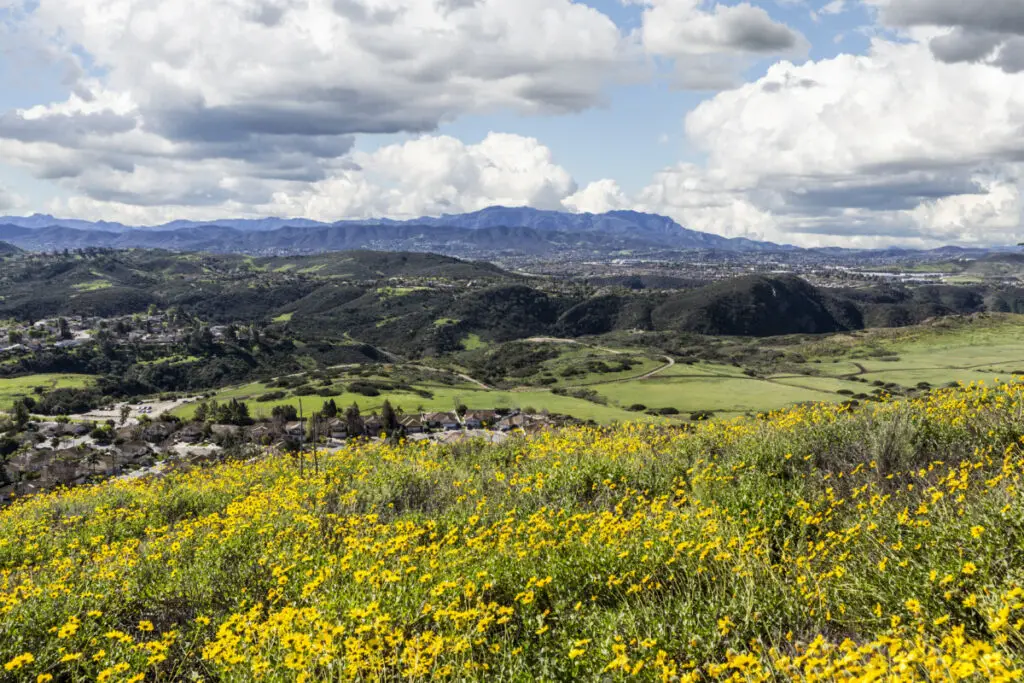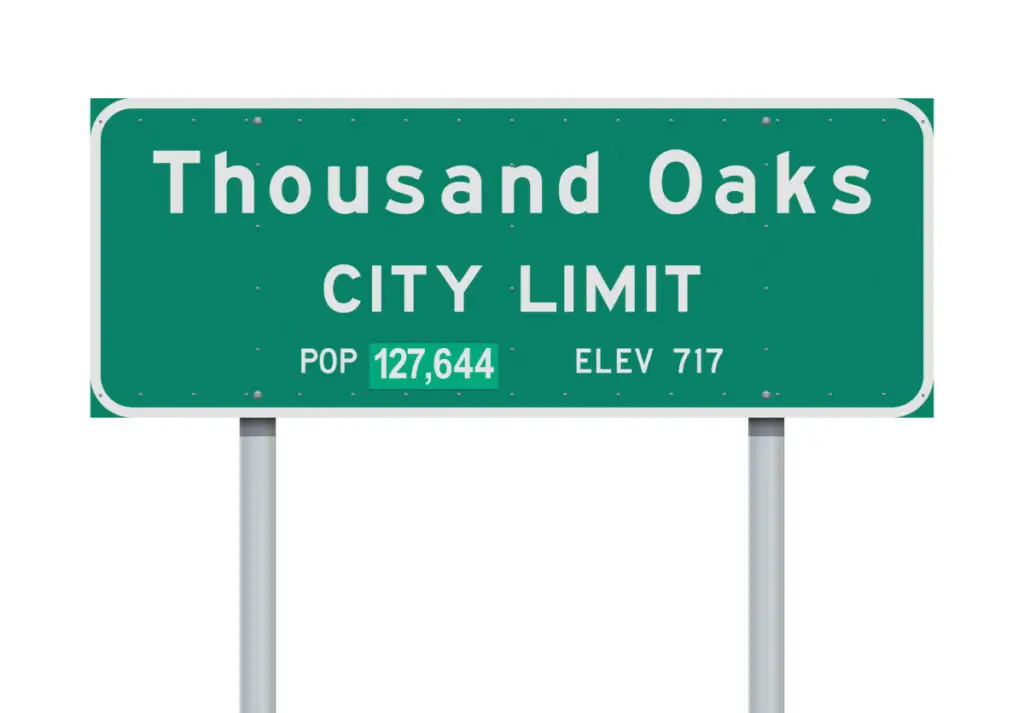
Thousand Oaks, California may seem like an idyllic city to live in Southern California, but it certainly can have its drawbacks. Any city will have its pros and cons, but when you’re looking to move your entire life to a new city, it’s important to be as aware as possible of any serious disadvantages. As someone who lived in and went to school in Thousand Oaks, I’ve compiled a list of things to consider before moving here.
Here are 15 reasons why you shouldn’t move to Thousand Oaks, California from a local perspective.
15. Allergies
Allergies can be devastating in Thousand Oaks. Camarillo, the city bordering Thousand Oaks on the west, is known to have a lot of agricultural activity, which can incite terrible allergies.
Especially with frequent winds, pollen is often carried through Thousand Oaks in the spring and summer months. However, because of California’s mild climate, many plants are grown year-round, which poses the risk of constant pollination and pollen in the air.
It seems that the most common
 t
t y
y p
p e
e s
s
 o
o f
f pollen
pollen in the air currently in mid-summer are tree pollen, grass pollen, and ragweed pollen, but it changes frequently.
in the air currently in mid-summer are tree pollen, grass pollen, and ragweed pollen, but it changes frequently.
14. Distance to Los Angeles
Depending on where you need to go in L.A., it could take you anywhere between 1 hour and 30 minutes to 3 hours to commute to the downtown area from Thousand Oaks. This is especially troublesome if you need to travel frequently for work, visit family, or for other reasons because you are very far from the Los Angeles International airport. I remember having to allow for two additional hours of travel just to get to the airport while growing up.
This can also be difficult because, while you can count on rush hour traffic, there are random traffic patterns where heavy traffic can occur for seemingly no reason.
13. Wildfires

It’s no secret that California is often ravaged by wildfires. The news seems to be rife with terrifying images of flaming hillsides that seem to extend for miles during the late summer and early fall, though wildfires are not limited to only these months.
The hills in Thousand Oaks haven’t been spared by wildfires. Especially with the Santa Monica Mountain range so close by, there is always a wildfire threat to consider. I have been evacuated from school on a couple of occasions due to wildfires, as well as having been evacuated from my home.
12. Santa Ana Winds
According to the National Weather Service , Santa Ana winds are defined as “a weather condition in which strong, hot, dust-bearing winds descend to the Pacific Coast around Los Angeles from inland desert regions.”
, Santa Ana winds are defined as “a weather condition in which strong, hot, dust-bearing winds descend to the Pacific Coast around Los Angeles from inland desert regions.”
These winds can reach speeds of 40 miles per hour and can greatly exacerbate wildfires or the risk thereof. They contribute to drought conditions by drying out brush, trees, bushes, and hillsides. Not to mention, sometimes local schools will have to modify recess schedules or physical education classes because of wild advisories.
Thousand Oaks sits on the edge of some hills and mountains where Santa Ana winds push through and continue on into lower altitude, coastal cities. This makes Thousand Oaks a channel for these winds.
11. Drought and Water Restrictions
Depending on the yearly rainfall and climate conditions, drought conditions can vary year by year. However, it seems that Thousand Oaks, California is often in dangerous drought conditions.
Thousand Oaks has been subject to its fair share of water restrictions where residents were encouraged to replace grass with turf lawns and adjust landscaping to install more desert plants that would need less water have just been the start.
As of May 24, 2022, the city of Thousand Oaks adopted Level 4 Water Conservation Requirements , some of which include the following:
, some of which include the following:
- 1 day per week watering- Saturday for odd street addresses; Sunday for even addresses
- Additional day (Wednesday) for active playing fields in parks, schools, licensed daycares, and golf fairways and greens
- Additional hand watering of trees and shrubs as necessary to keep them alive
- No watering from 8 am-6 pm
- Only low-volume (or low-flow) irrigation systems can be used
- Pools must be covered
- No draining and re-filling of pools or spas
- No filling of ornamental water features
Water restrictions can last indefinitely and affect how the residents interact with each other.
10. Threat of Earthquakes
Thousand Oaks lies in Ventura County which makes it highly susceptible to earthquakes. The San Andres fault line is the biggest risk when it comes to fault lines in this area of California and some experts predict that it is long overdue for an earthquake.
According to California Earthquake Authority , “the San Andreas fault
, “the San Andreas fault is the primary feature of the system and the longest fault in California, slicing through Los Angeles County along the north side of the San Gabriel Mountains. It can cause powerful earthquakes—as big as magnitude 8.”
is the primary feature of the system and the longest fault in California, slicing through Los Angeles County along the north side of the San Gabriel Mountains. It can cause powerful earthquakes—as big as magnitude 8.”
Granted, in the past 365 days, Thousand Oaks has experienced 282 earthquakes , most of which are at a small enough magnitude you’d have no idea, but they still pose a threat to the community.
, most of which are at a small enough magnitude you’d have no idea, but they still pose a threat to the community.
9. Public Transportation

Thousand Oaks is a very family-oriented community, meaning that there are a lot of suburbs and neighborhoods. There are also large streets and shopping areas that offer entertainment and recreation; however, it might be hard to reach these areas if you don’t have a personal vehicle.
In Thousand Oaks, the main form of public transportation is the Thousand Oaks Transit buses. These buses have 5 routes but only run once every hour. The Thousand Oaks Transit website offers bus passes that can be purchased in increments of a 10-ride pass, a 7-day pass, or a 31-day pass.
offers bus passes that can be purchased in increments of a 10-ride pass, a 7-day pass, or a 31-day pass.
There aren’t very many bus stops that go into the suburbs, so finding a bus stop close to your home might prove difficult. There isn’t a taxi service or a train station in Thousand Oaks, so public transportation really starts and ends with the buses.
I polled 45 of my friends that grew up in Thousand Oaks and only 3 out of those 45 people had ever taken the bus at one point. That being said, all 45 of them agreed that they predominantly use a personal vehicle to navigate Thousand Oaks.
8. Crowded City
The city of Thousand Oaks spans 55.4 square miles, and 125,754 people live in those 55.4 square miles according to the population census in 2020 . The population has been growing for the past number of years. I’ve since moved away from Thousand Oaks, but I see evidence of this every time I go home to visit. There are always new housing communities being built, new restaurants or businesses popping up, or apartment buildings where there didn’t use to be. I’ve seen Thousand Oaks transform from a small, quiet community into a bigger city.
. The population has been growing for the past number of years. I’ve since moved away from Thousand Oaks, but I see evidence of this every time I go home to visit. There are always new housing communities being built, new restaurants or businesses popping up, or apartment buildings where there didn’t use to be. I’ve seen Thousand Oaks transform from a small, quiet community into a bigger city.
Larger populations affect resource availability and school enrollment. In my graduating class, there were about 800 students. As the population continues to grow, so will class sizes.
7. Traffic

Thousand Oaks sits at the junction of the 101 and 23 state route freeways. The 101 will take you directly downtown, while the 23 will connect to the 118 highway and take you through Simi Valley, Calabasas, and other cities in Los Angeles county. If you commute out of Thousand Oaks, you’ll have to take into account the inevitable traffic that will build up in morning and evening rush hour traffic.
Because these two freeways meet up in Thousand Oaks, it often makes it a congested area.
Additionally, the infrastructure isn’t the best. The 101 freeway is severely underbuilt for how much traffic it sees every day. At one point it features 5 lanes, but the majority of the freeway is 3 lanes wide. This definitely contributes to the long commute times.
The 23 freeway suffers from the same problem, and even slims down to 2 lanes in either direction. For how many people travel using these freeways, they simply aren’t built to accommodate such high traffic.
6. Political Climate
Within every city, there are going to be people with unique perspectives. However, Thousand Oaks and Ventura County have long entertained certain political viewpoints. While there is nothing wrong with any political preference, living in a city that has very strong inclinations toward one political perspective can prove challenging if you don’t have the same viewpoint.
5. Higher Education Opportunities
While there are two-year colleges and community college options, there are limited opportunities for higher education in Thousand Oaks. The only four-year university that is based in Thousand Oaks is California Lutheran University . There are other universities like California State University Channel Islands, the University of Southern California, and the University of California, Los Angeles but all of the said universities require a commute.
. There are other universities like California State University Channel Islands, the University of Southern California, and the University of California, Los Angeles but all of the said universities require a commute.
Thousand Oaks is home to companies such as Amgen, who look for people who have higher education degrees, so having access to attain a college degree is helpful.
4. Job Opportunities

When looking for senior-level jobs, there aren’t very many listings as of late, especially if you’re looking to work directly in Thousand Oaks and not commute into neighboring cities. While there are many entry-level jobs available, one of these jobs will most likely not pay adequately to account for the cost of living in Thousand Oaks.
Most companies that are headquartered in Thousand Oaks are large pharmaceutical companies, tech companies, biological or medical-related companies, or are based in some other facet of the STEM field. Most of these companies are, again, looking for employees with college degrees in relevant fields.
Additionally, many businesses have moved their headquarters out of California due to unfriendly business taxes, taking job opportunities with them.
3. High-Priced Housing
The average price of a home in Thousand Oaks is slightly more than 1 million dollars . In 2020, the average price of a home was about $750k. The prices of homes in Thousand Oaks have jumped substantially in just two years, making the market difficult to enter and not accessible for every budget.
. In 2020, the average price of a home was about $750k. The prices of homes in Thousand Oaks have jumped substantially in just two years, making the market difficult to enter and not accessible for every budget.
Because this is the median price, there are going to be homes listed above and below this price point. However, from the homes currently listed, I haven’t seen a home posted for less than $500k.
2. Gas Prices

The cheapest gas prices in Thousand Oaks currently are hovering at $5.40 per gallon. Even if we were to overlook current events and prices, California has always had heavy taxes on gas.
As of July 1, 2022 , the gas tax was increased by 5.6%, taking the current tax on gas up to 53.9 cents per gallon. Thousand Oaks is an easily-accessible community, but if you commute to work, want to travel to the beach, or drive to other cities, gas prices are definitely something to consider.
, the gas tax was increased by 5.6%, taking the current tax on gas up to 53.9 cents per gallon. Thousand Oaks is an easily-accessible community, but if you commute to work, want to travel to the beach, or drive to other cities, gas prices are definitely something to consider.
1. Taxes
A tale as old as time, California and high taxes have a lengthy history. I’ve broken down taxes in California into a couple of different categories to paint a holistic view of what you’ll be getting yourself into should you decide to move to Thousand Oaks.
Income Tax
H&R Block offers the following information for single taxpayers:
offers the following information for single taxpayers:
| Taxable Income | Rate |
| $0-8,809 | %1.00 |
| $8,809 – $20,883 | %2.00 |
| $20,883 – $32,960 | %4.00 |
| $32,960 – $45,753 | %6.00 |
| $45,753 – $57,824 | %8.00 |
| $57,824 – $295,373 | %9.30 |
| $295,373 – $354,445 | %10.30 |
| $354,445 – $590,742 | %11.30 |
| $590,742 – $999,999 | %12.30 |
| $1,000,000+ | %13.30 |
Taxes for those that are married or filing jointly do look a little different, but not by much. Income tax is staggeringly high when compared with that of other states.
Property Tax
The property tax rate in Thousand Oaks is 1.0400%. In 1978, proposition 13 was passed which essentially put forth that property tax cannot exceed more than 1% of the property’s assessed value. However, the local municipality can levy additional fees that won’t be reflected in official, published rates.
additional fees that won’t be reflected in official, published rates.
Sales Tax
As of 2022, the sales tax rate in Thousand Oaks is 7.25%. The sales tax rate is the cumulation of state, county, and city sales tax rates.
Ultimately, a large portion of your income will go to the state of California in the form of taxes.

